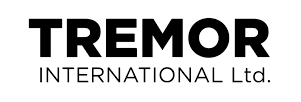Tremor International has been on a journey to rebuild its biz with assets on both the buy and sell sides of digital media.
With its acquisition of Amobee on Monday, Tremor is making inroads into linear inventory.
Amobee is a buy-side platform that cut its teeth in mobile before breaking into connected TV and creating technology to unify the process of buying and selling CTV and linear.
With Amobee as part of its stack, Tremor is aiming to cement its position as an end-to-end, omnichannel media buying solution, Ofer Druker, CEO of Tremor International, told AdExchanger.
Wall Street is satisfied enough, for now — Tremor’s stock rose 2% on Tuesday, following the company’s report to investors about the acquisition the day after the announcement.
For reference, Tremor sold its DSP to mobile ad platform Taptica in 2017, which later rebranded itself back to Tremor Video. Although Tremor sold its original sell-side business (which eventually became part of Magnite) around the same time, it bought a different SSP, Unruly, in 2020.
Druker spoke with AdExchanger about the company’s plans for its most recent acquisition.
AdExchanger: Tremor already has a DSP. What does Amobee bring that’s new to Tremor’s demand-side business?
OFER DRUKER: Amobee has a lot of capabilities that we don’t.
For one, Amobee has a really strong self-service platform, which is something we’ve only started building as a solution just two years ago. Amobee’s self-service offerings are much more mature than ours – not just the platform itself, but all the surrounding support, training and tools needed for clients to operate the system efficiently.
Amobee’s DSP is also more robustly omnichannel, while Tremor was strictly video-only until just last year, so this will help us open up new channels to clients already working with us on video.
Also, we’re not very strong in performance. Tremor is more of a branding company, whereas Amobee has a stronger focus on measurement and attribution. And we’re very aware that DTC and performance marketers are starting to spend more on video – especially CTV.
What business opportunity do these new capabilities bring to Tremor?
Tremor will be able to focus on linear spenders.
Amobee extended its mobile measurement strategy into advanced TV when it bought video ad platform Videology in 2018 – but working with broadcasters is a new field for us.
Linear still connects with what we’re doing in CTV today, though, because broadcasters are increasingly involved in digital activity, too. DTC marketers overall are turning to CTV.
But while Tremor didn’t have linear tech, we did acquire CTV ad server Spearad last year to help linear broadcasters extend their buys into CTV. Integrating Amobee’s tech within our own will create a more self-service, omnichannel DSP that will help bridge the gap between broadcast and digital performance for linear buyers.
Will there be any friction between the two DSPs Tremor now owns?
No, we don’t expect any cannibalization between the businesses because we don’t have much of a client overlap with Amobee.
Amobee mostly works with local agencies in the Midwest and West of the US, whereas Tremor’s business model is more national.
Our businesses are more complementary than competitive. This is a way to enhance our CTV offerings for our combined client base.
Does Tremor consider this acquisition another step toward supply-path optimization?
Yes, because our end goal is an end-to-end solution. We have a DSP and an SSP, so most of our business activity already takes place within our own platform.
Adding Amobee’s demand-side offerings expands our scale on the buy side, which brings advertisers better reach, accuracy and overall profitability.
Have you found that clients are skeptical of companies that represent both ends of the supply chain?
No, we haven’t encountered any issues with clients because an end-to-end solution makes their lives easier. Centralizing buy- and sell-side offerings simplifies the media planning process and keeps prices down.
A tech stack that has both a DSP and an SSP in the same platform is also less affected by cookie deprecation and other forms of signal loss from other third-party data sources.
Also, companies today don’t really provide exclusivity. They’re testing and running campaigns with multiple other partners anyway.
This interview has been edited and condensed.
For more articles featuring Ofer Druker, click here.




















